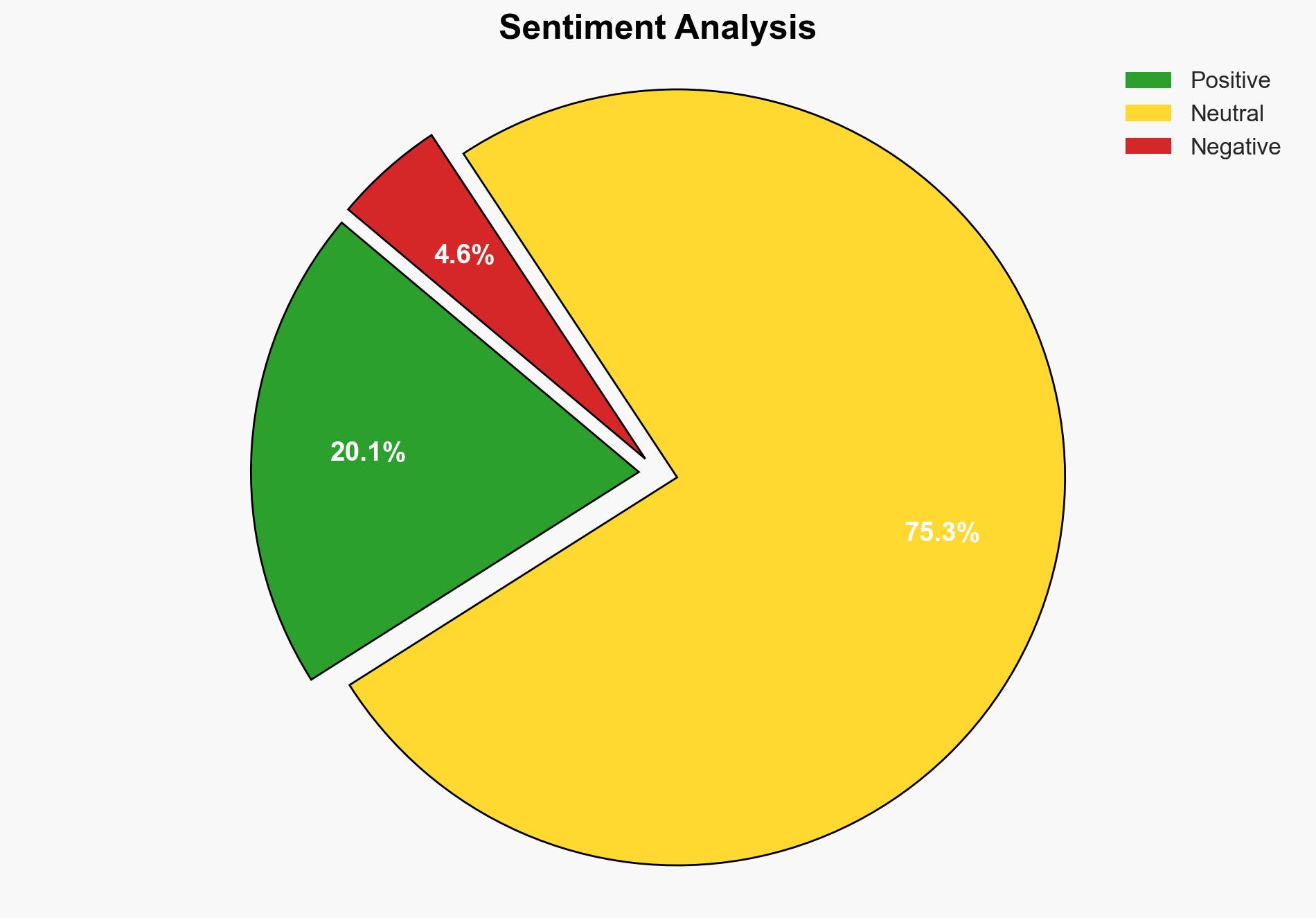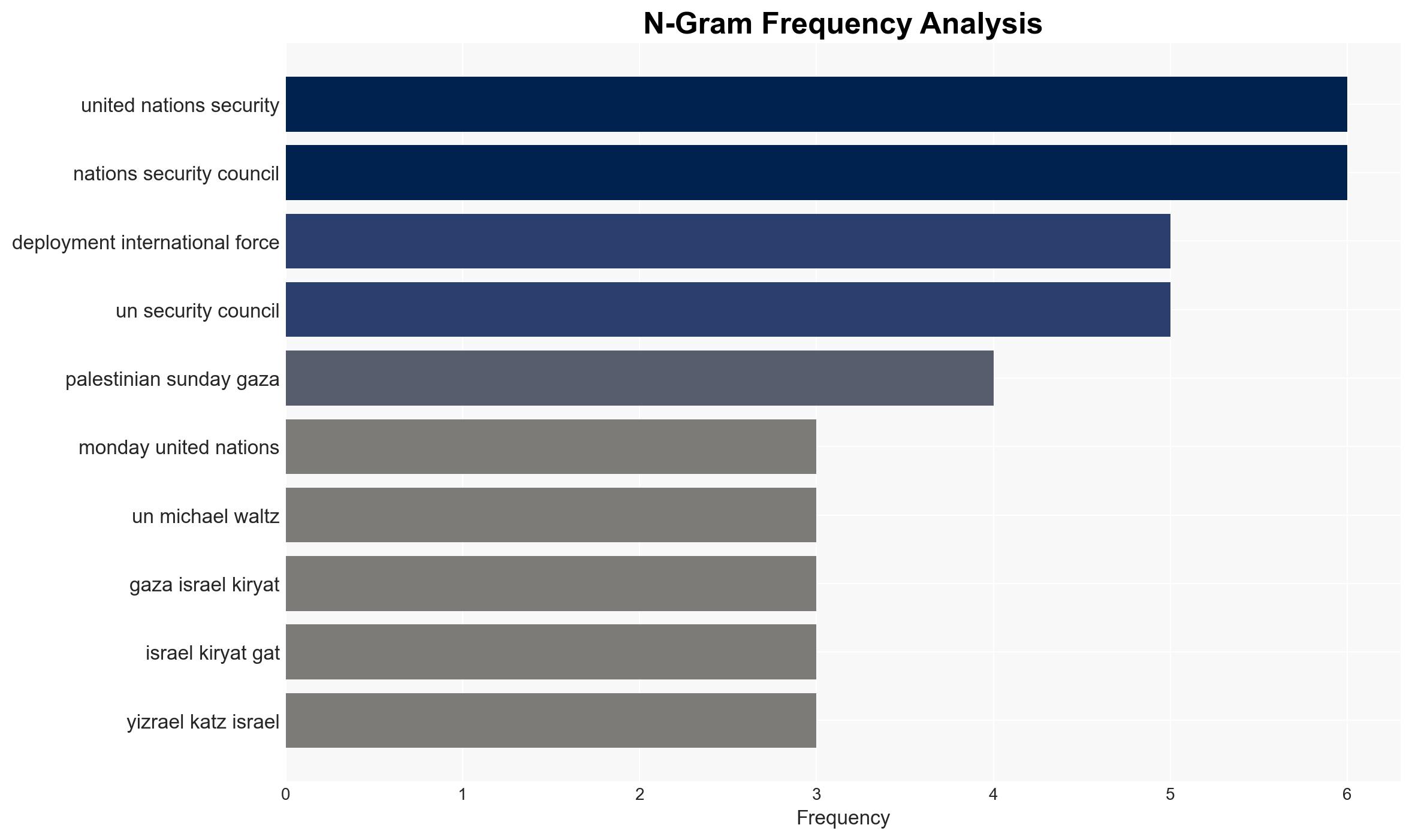UN Security Council approves Trumps Gazapeace plan green-lighting US-Israeli control of Gazas future – Mondoweiss
Published on: 2025-11-18
AI-powered OSINT brief from verified open sources. Automated NLP signal extraction with human verification. See our Methodology and Why WorldWideWatchers.
Intelligence Report:
1. BLUF (Bottom Line Up Front)
With a moderate confidence level, the most supported hypothesis is that the UN Security Council’s approval of the Gaza peace plan is an attempt to stabilize the region through international oversight, yet it risks exacerbating tensions due to perceived biases and lack of local stakeholder support. Recommended action includes diplomatic engagement with Palestinian factions and regional stakeholders to address grievances and ensure broader support for the peace initiative.
2. Competing Hypotheses
Hypothesis 1: The UN Security Council’s approval of the peace plan is a strategic move to stabilize Gaza through international intervention, aligning with US-Israeli interests and potentially reducing immediate conflict.
Hypothesis 2: The approval is primarily a geopolitical maneuver by the US and Israel to exert control over Gaza, likely increasing regional instability due to lack of support from Palestinian factions and potential backlash from international actors.
Hypothesis 2 is more likely due to the strong opposition from Palestinian factions and abstentions from key international players like Russia and China, indicating a lack of consensus and potential for increased tensions.
3. Key Assumptions and Red Flags
Assumptions: The international stabilization force will operate effectively and impartially. The peace plan will lead to long-term stability in Gaza.
Red Flags: Strong opposition from Palestinian factions and civil society. Abstentions by Russia and China suggest geopolitical tensions. Potential for biased implementation favoring Israeli interests.
4. Implications and Strategic Risks
The plan could lead to increased political tensions and resistance from Palestinian factions, potentially escalating into violence. Cyber and informational campaigns may be employed by opposing factions to undermine the peace initiative. Economic instability could arise if the plan disrupts existing trade and aid flows.
5. Recommendations and Outlook
- Engage diplomatically with Palestinian factions and regional stakeholders to address grievances and build broader support for the initiative.
- Monitor implementation of the stabilization force to ensure impartiality and effectiveness.
- Best-case scenario: Successful stabilization of Gaza with reduced conflict and increased cooperation.
- Worst-case scenario: Escalation of violence and regional instability due to perceived biases and lack of support.
- Most-likely scenario: Continued tensions with sporadic violence and diplomatic challenges in implementing the plan.
6. Key Individuals and Entities
Donald Trump, Michael Waltz, Benjamin Netanyahu, Hamas, UN Security Council, Russia, China.
7. Thematic Tags
Regional Focus, Middle East, Gaza, International Relations, Peacekeeping, US-Israel Relations, UN Security Council
Structured Analytic Techniques Applied
- Causal Layered Analysis (CLA): Analyze events across surface happenings, systems, worldviews, and myths.
- Cross-Impact Simulation: Model ripple effects across neighboring states, conflicts, or economic dependencies.
- Scenario Generation: Explore divergent futures under varying assumptions to identify plausible paths.
Explore more:
Regional Focus Briefs ·
Daily Summary ·
Support us
·





